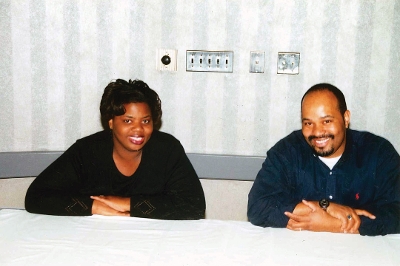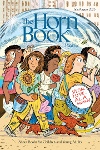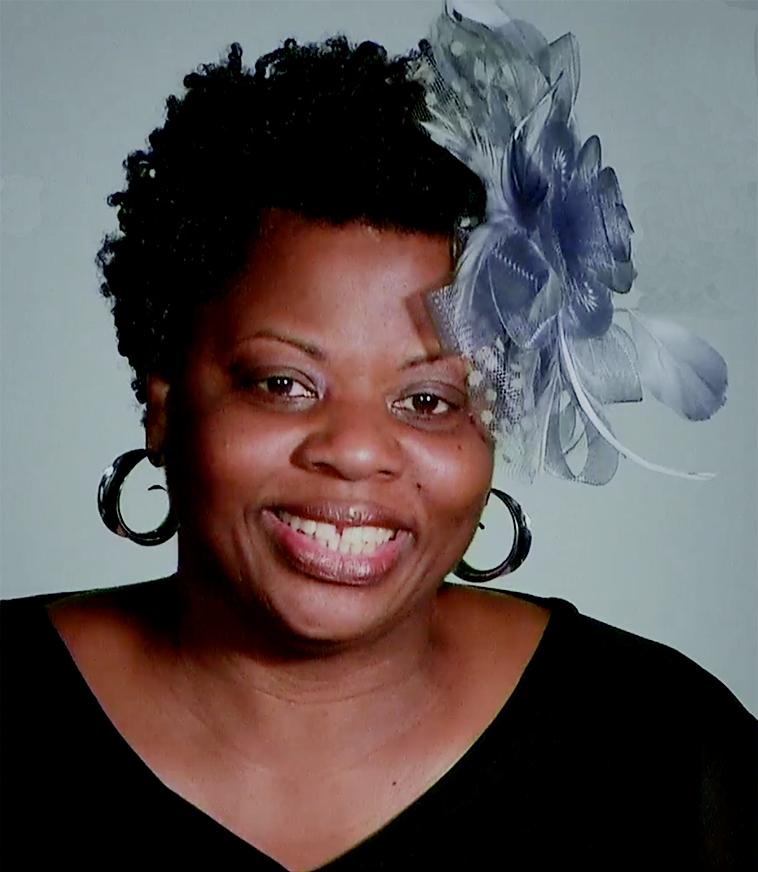Profile of 2023 Children's Literature Legacy Award winner James E. Ransome
One of the highlights of my time as a doctoral student was serving as a hostess for esteemed authors and illustrators when they came to town to participate in the now-defunct The Ohio State University Children’s Literature Conference. Over the course of my four years as a graduate student there (1999–2003), I had the privilege of hosting such beloved creators of children’s books as Nikki Grimes, Jerry Pinkney, and James E. Ransome, ALSC’s 2023 Children’s Literature Legacy Award recipient.

Jonda C. McNair and James E. Ransome in 2001. Photo: James J. Bishop.
One of the highlights of my time as a doctoral student was serving as a hostess for esteemed authors and illustrators when they came to town to participate in the now-defunct The Ohio State University Children’s Literature Conference. Over the course of my four years as a graduate student there (1999–2003), I had the privilege of hosting such beloved creators of children’s books as Nikki Grimes, Jerry Pinkney, and James E. Ransome, ALSC’s 2023 Children’s Literature Legacy Award recipient. I would stand at the airport, holding one of their books and waiting to pick them up and then chauffeur them around town to places they needed to go (e.g., book signings at Cover to Cover, the popular independent bookstore in Columbus), shuttle them around the convention center during the conference, and assist them during autograph sessions. As someone studying African American children’s literature under the tutelage of Rudine Sims Bishop, it was meaningful for me on several levels to interact with and get to know these individuals. After graduating from The Ohio State University and accepting a position at Clemson University in 2003, I kept in touch with James Ransome.
In 2005 I received a Grant-in-Aid from the National Council of Teachers of English to conduct a family literacy program titled “‘I Never Knew There Were So Many Books About Us’: Parents and Children Reading and Responding to African American Children’s Literature Together.” The program was co-sponsored and strongly supported by the Kappa Zeta Omega Chapter of Alpha Kappa Alpha Sorority, Inc., in Anderson, South Carolina. I wanted to see what happened when I exposed ten African American families with children in grades K–2 to an abundance of books (fifty-plus titles!) by and about African Americans. I provided each of the families with copies of seven books, five of which were illustrated by James: Do like Kyla by Angela Johnson, Uncle Jed’s Barbershop by Margaree King Mitchell, Aunt Flossie’s Hats (and Crab Cakes Later) by Elizabeth Fitzgerald Howard, Satchel Paige by Lesa Cline-Ransome (James’s wife), and Visiting Day by Jacqueline Woodson (as well as Ella Fitzgerald: The Tale of a Vocal Virtuosa by Andrea Davis Pinkney, illustrated by Brian Pinkney; and Thunder Rose by Jerdine Nolen, illustrated by Kadir Nelson). I carefully chose the books I provided to the families, selecting ones I deemed foundational and important works within the canon of African American children’s literature.
The families participated in a series of five monthly workshops, and the culminating event was a presentation by and autograph session with James. I believed this event would be a meaningful way to end the program, by having a prominent illustrator of children’s literature come and talk about his work, especially because the families and I had read and responded to several of his books over the course of the five workshops. Knowing they would easily connect with his gregarious and gracious nature, I also wanted the families to interact with James personally and get their copies of his books autographed.

Creating original artwork using numbers. Photo: Harriett Clinkscales.
The presentation was a huge success! James dazzled the families with a drawing-with-numbers exercise and gifted an original piece of art to each family. After his presentation, one of the parents commented, “I liked the part where he showed how he had to do research to actually find the pictures for illustrations…I didn’t know there was so much research going into illustrations.” Another parent told me that when her child brought his basal reader home from school, she noticed a story in it that was illustrated by James. She sent a note to the teacher about having participated in the family literacy program and loaned her son’s autographed copies of James’s books for the class to read. James’s visit was informative and enlightening for the families, particularly the parents. They not only learned about the work of an award-winning illustrator and his creative/artistic process but also developed an appreciation for high-quality children’s literature and saw the range and depth of topics and themes in many books for children, including the incarceration of loved ones, segregation, and surviving and holding onto dreams during the Great Depression. In looking back over my career, this family literacy project is one of the accomplishments of which I am the proudest, and I am especially pleased that James was a part of it.
* * *
I firmly believe that James has made “a substantial and lasting contribution to children’s literature,” particularly within the context of children’s books by and about African Americans. In my 2010 article “Classic African American Children’s Literature,” published in The Reading Teacher, I argued that when used in the field of children’s literature, the term classic primarily refers to books by white authors and illustrators, such as Where the Wild Things Are by Maurice Sendak, The Polar Express by Chris Van Allsburg, and The Very Hungry Caterpillar by Eric Carle. Many children’s books by and about African Americans are classics, too, even if they are not typically referred to in this way. James has illustrated several titles that I consider classic African American children’s literature, including Aunt Flossie’s Hats (and Crab Cakes Later) and Uncle Jed’s Barbershop. Although there is no consensus on exactly what makes a book a classic, common themes are that classics are books with an enduring appeal for reasons that might include challenging readers to think, touching upon universal desires or themes that are important to diverse readers across time and place, being landmarks or breakthroughs in some way, having strong writing, and being innovative in factors such as style.
Aunt Flossie’s Hats (and Crab Cakes Later) focuses on universal ideas such as the importance of family, memories, and stories, while also incorporating the significance and prominence of hats in the lives of many African American women. Uncle Jed’s Barbershop conveys universal themes such as love of family, overcoming, and the importance of having dreams — all within a rural setting in a Black community. Do like Kyla, one of my favorite titles illustrated by James, may not be considered a classic, but in my mind, it is a special book — one that has been in print since it was published in 1990 and speaks to the universality, closeness, and love of sibling relationships, especially how younger children want to emulate their older siblings.
Among the numerous major awards James has won are a Coretta Scott King Illustrator Award for The Creation by James Weldon Johnson and Coretta Scott King Illustrator Honors for Before She Was Harriet by Lesa Cline-Ransome, The Bell Rang (which he also wrote), and Uncle Jed’s Barbershop. In addition, several of James’s titles have been identified as ALA Notable Books, and the Children’s Book Council named him as one of seventy-five authors and illustrators everyone should know. The authors with whom he has collaborated are a virtual who’s-who within the world of children’s literature, including Angela Johnson, Virginia Hamilton, Jacqueline Woodson (all MacArthur Fellows), and Patricia C. McKissack.
James is a lover of art and museums. A few of the many visual artists he admires are Romare Bearden, Mary Cassatt, Robert Freeman, Jerry Pinkney, Edgar Degas, Winslow Homer, William H. Johnson, Tom Feelings, Henri Matisse, Henry Ossawa Tanner, Jacob Lawrence, and Andrew Wyeth. In fact, some of the illustrations in James’s picture books were inspired by paintings by these artists. For example, the image in Visiting Day of the young girl wearing a blue dress and sitting in a green chair before traveling to see her father in prison was inspired by Cassatt’s 1878 painting Little Girl in a Blue Armchair. Whenever I read Visiting Day to my students, I point this out, and we then look at the piece by Cassatt and explore the differences between the two images. In her 2007 book Free Within Ourselves: The Development of African American Children’s Literature, Rudine Sims Bishop wrote, “Ransome’s remarkable and sometimes dramatic oil paintings are evidence of his affinity for strong design and strong colors…His paintings also sometimes reflect his experiences as a filmmaker, with changing perspectives, close-ups, and ‘snapshot images.’” Young children are often initially exposed to art through picture books, and Bishop uses the term museum art when referring to James’s illustrations. He merits being recognized and thanked for introducing readers to a range of topics and important figures (e.g., the Great Depression, quilts, the National Football League, Satchel Paige, Harriet Tubman, Serena and Venus Williams, and Major Taylor) over the course of his career, while at the same time introducing children to museum-quality art via his illustrations.
* * *
Since our first meeting at the 2001 The Ohio State Children’s Literature Conference, James and I have developed, maintained, and nurtured a long and solid friendship. In our conversations, we talk honestly about the children’s book industry overall and his work specifically, support each other in our various endeavors, ask each other for advice, agree and agree to disagree, and share our dreams and aspirations for successful, stellar careers. Because of our longtime friendship, he asked me to write this piece, and I was thrilled and honored to do so. He is indeed deserving of the ALSC’s 2023 Children’s Literature Legacy Award. Congratulations, James!
From the July/August 2023 issue of The Horn Book Magazine: Special Issue: ALA Awards. For more speeches, profiles, and articles, click the tag ALA 2023.
 Single copies of this special issue are available for $15.00 including postage and may be ordered from:
Single copies of this special issue are available for $15.00 including postage and may be ordered from:
Horn Book Magazine Customer Service
magazinesupport@mediasourceinc.com
Full subscription information is here.

RELATED
ALREADY A SUBSCRIBER? LOG IN
We are currently offering this content for free. Sign up now to activate your personal profile, where you can save articles for future viewing.







Add Comment :-
Be the first reader to comment.
Comment Policy:
Comment should not be empty !!!